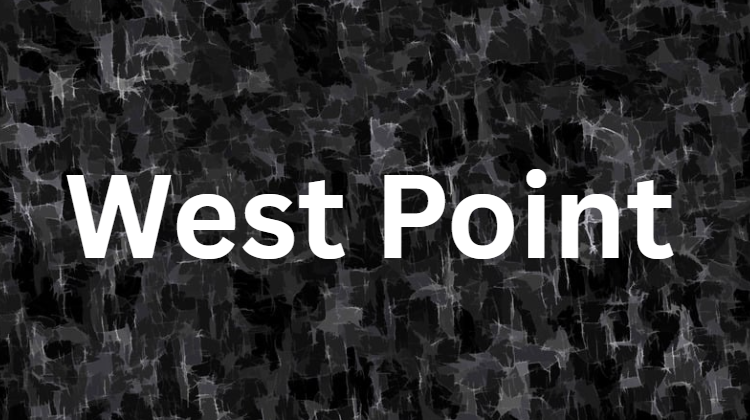West Point is one of the most respected military academies in the world. Officially known as the United States Military Academy (USMA), it is located in West Point, New York, along the beautiful Hudson River. The academy was founded in 1802 and has produced many of America’s greatest military leaders. It is not just a college; it is a place where discipline, honor, and leadership are taught every day.
2. History of West Point
The story of West Point begins during the American Revolution. The site was first used as a military post because of its strong location on the Hudson River. In 1802, President Thomas Jefferson signed a law to create the United States Military Academy at West Point.
Since then, West Point has played a key role in training soldiers and leaders. Many famous generals like Ulysses S. Grant, Robert E. Lee, and Douglas MacArthur studied there. Even in modern times, many top officers in the U.S. Army are West Point graduates.
3. The Mission of West Point
The main goal of West Point is to educate, train, and inspire young men and women to become leaders of character for the U.S. Army. The academy focuses on four key areas:
- Academics—providing a strong education in science, engineering, and the arts.
- Physical training—ensuring every cadet is strong, healthy, and fit.
- Military training—teaching discipline, strategy, and leadership.
- Moral development – building honesty, respect, and a sense of duty.
Graduates are not just given a degree; they are also commissioned as second lieutenants in the U.S. Army.
4. Life as a Cadet at West Point
Life at West Point is strict, organized, and challenging. Cadets follow a daily routine that includes classes, physical training, and military duties. The first year is especially tough, as new students—called “plebes”—learn discipline and teamwork.
Cadets must wear uniforms, follow military rules, and maintain excellent behavior. There are also many extracurricular activities, such as sports, clubs, and community service programs.
The academy believes in developing “the whole person”—mind, body, and character. Students learn leadership through real-life experiences, not just in classrooms.
5. Academic Excellence
West Point is known for its strong academics. The education system is similar to top universities but includes a military touch. Every cadet must study subjects like:
- Mathematics and Science
- Engineering
- History and Political Science
- Leadership and Ethics
- Foreign Languages
The classes are small, and teachers give personal attention to students. Cadets learn problem-solving, teamwork, and communication—skills that are useful in both the military and civilian life.
6. Admission Process at West Point
Getting into West Point is very competitive. Applicants must show excellence in academics, leadership, and physical fitness. The process includes:
- A nomination from a U.S. Senator or Representative
- A strong high school record
- High SAT or ACT scores
- Physical fitness tests
- Medical exams
- Interviews
Once accepted, cadets receive a full scholarship, which covers tuition, food, housing, and other expenses. In return, they commit to serve in the U.S. Army after graduation.
7. West Point Traditions
West Point has many traditions that build pride and unity among cadets. Some popular ones include:
- The Army-Navy Game—an annual football match between West Point and the U.S. Naval Academy.
- The Cadet Honor Code—”A “cadet will not lie, cheat, steal, or tolerate those who do.”
- R-Day (Reception Day)—the day new cadets begin their training.
- Graduation Parade—a grand event celebrating the completion of cadet life.
These traditions make West Point unique and help create lifelong memories for its students.
8. Impact and Legacy of West Point
For over two centuries, West Point has shaped the history of the United States. Its graduates have led the country through wars, crises, and peace missions. Many have also become successful in government, business, and education.
West Point’s values—duty, honor, and country—continue to guide its graduates throughout their lives. The academy’s legacy is not just about military success but also about building character and leadership.
9. Modern West Point
Today, West Point continues to adapt to the modern world. The academy uses technology, digital classrooms, and new teaching methods to prepare cadets for the challenges of modern warfare and leadership.
It also promotes diversity and inclusion, welcoming talented students from all backgrounds. The focus remains the same: to train the best leaders for the future.
10. Why West Point Matters
West Point is more than a military school—it is a symbol of excellence, leadership, and national pride. Every year, hundreds of young people dream of wearing the gray uniform and serving their country with honor.
The academy’s role in shaping ethical, intelligent, and brave leaders is unmatched. It continues to stand as a shining example of how education and discipline can build a better future.
FAQs
Q1. Where is West Point located?
West Point is located in West Point, New York, about 50 miles north of New York City.
Q2. When was West Point established?
It was founded on March 16, 1802, making it the oldest military academy in the United States.
Q3. Who can apply to West Point?
U.S. citizens aged 17 to 23 who meet academic, physical, and moral standards can apply.
Q4. How long is the West Point program?
The program lasts four years, leading to a Bachelor of Science degree and a commission in the U.S. Army.
Q5. What is the motto of West Point?
The official motto is “Duty, Honor, Country.”
Q6. Do cadets pay tuition?
No, all cadets receive a full scholarship that covers all educational expenses.
Q7. What happens after graduation?
Graduates become second lieutenants in the U.S. Army and must serve for a certain number of years.
Conclusion
West Point stands as a beacon of courage, intelligence, and honor. For over 200 years, it has built leaders who protect and serve the nation with pride. With its strong traditions, high standards, and deep sense of duty, West Point remains one of the most important institutions in America’s history and future.

